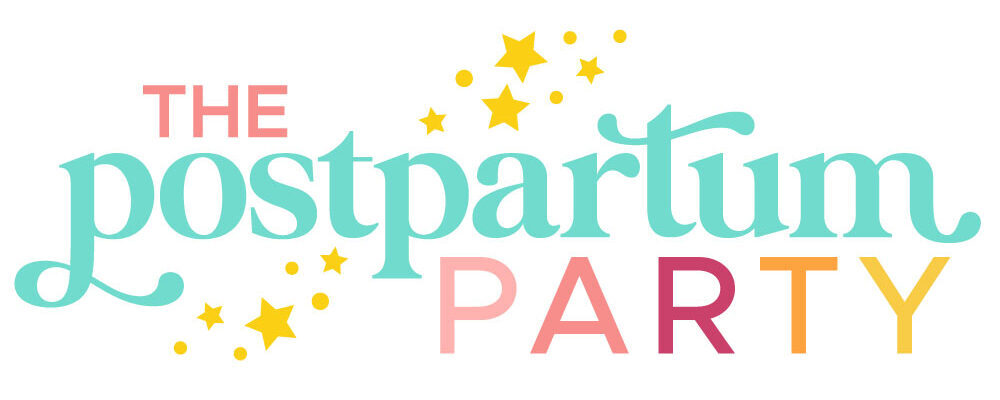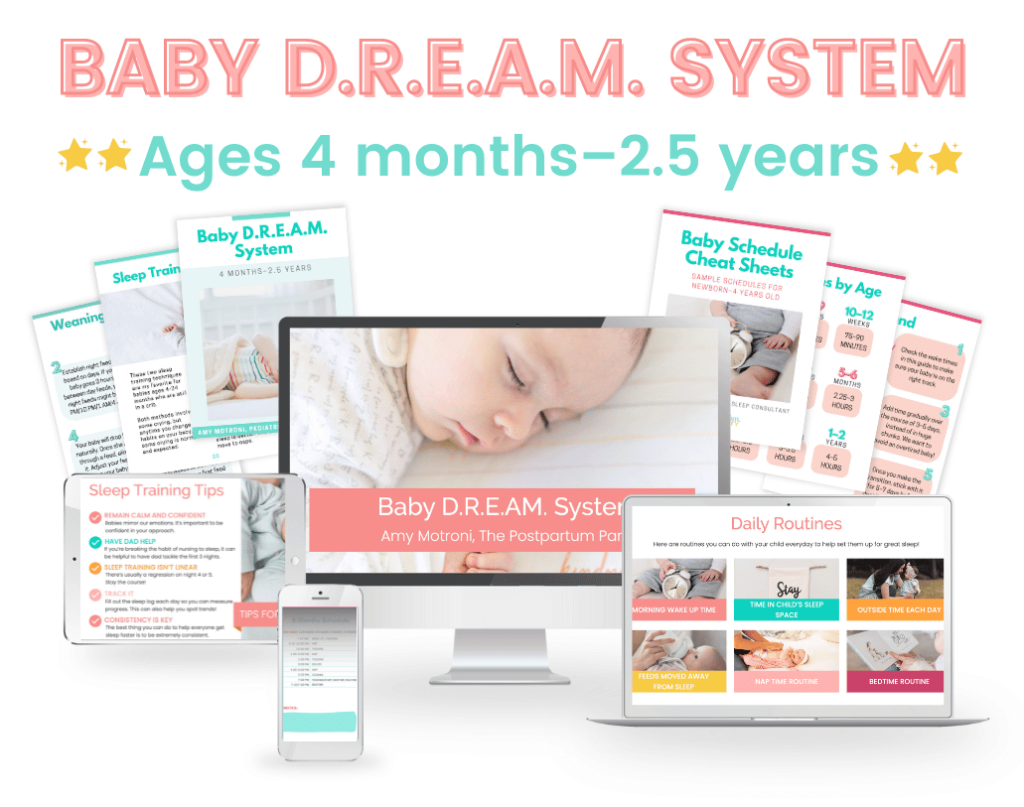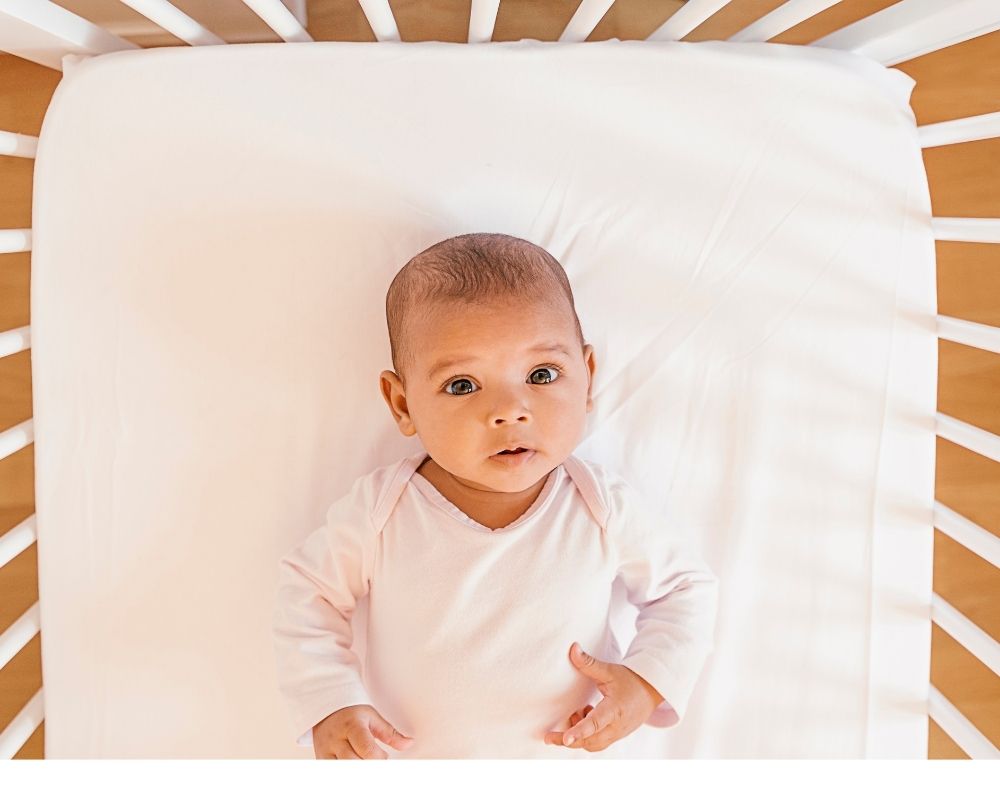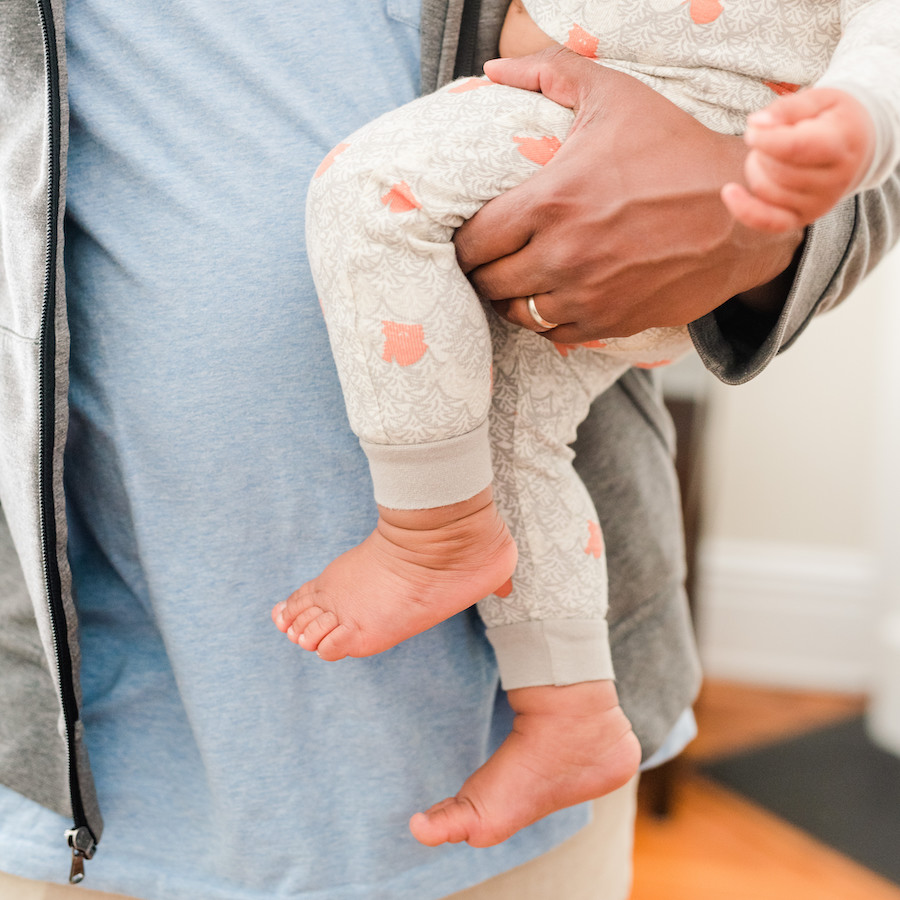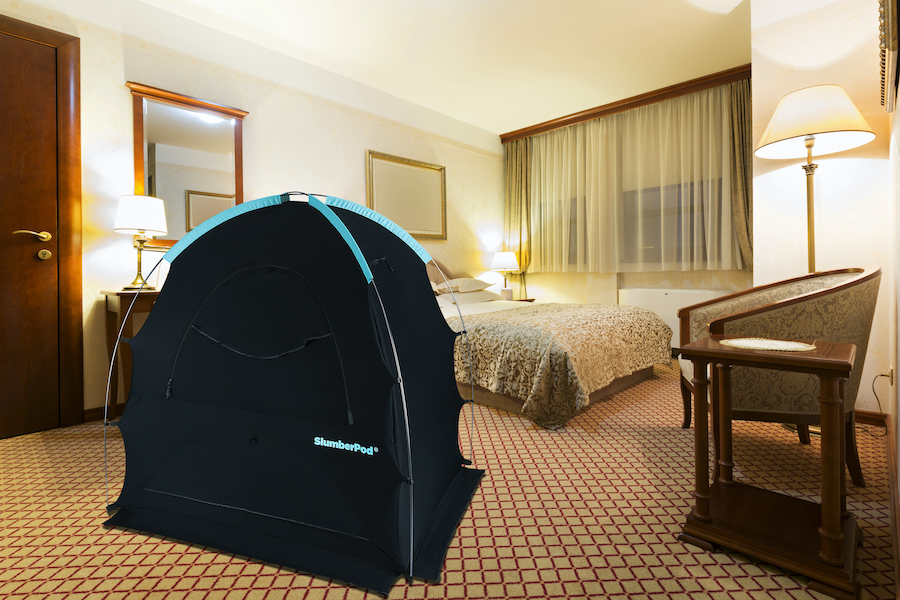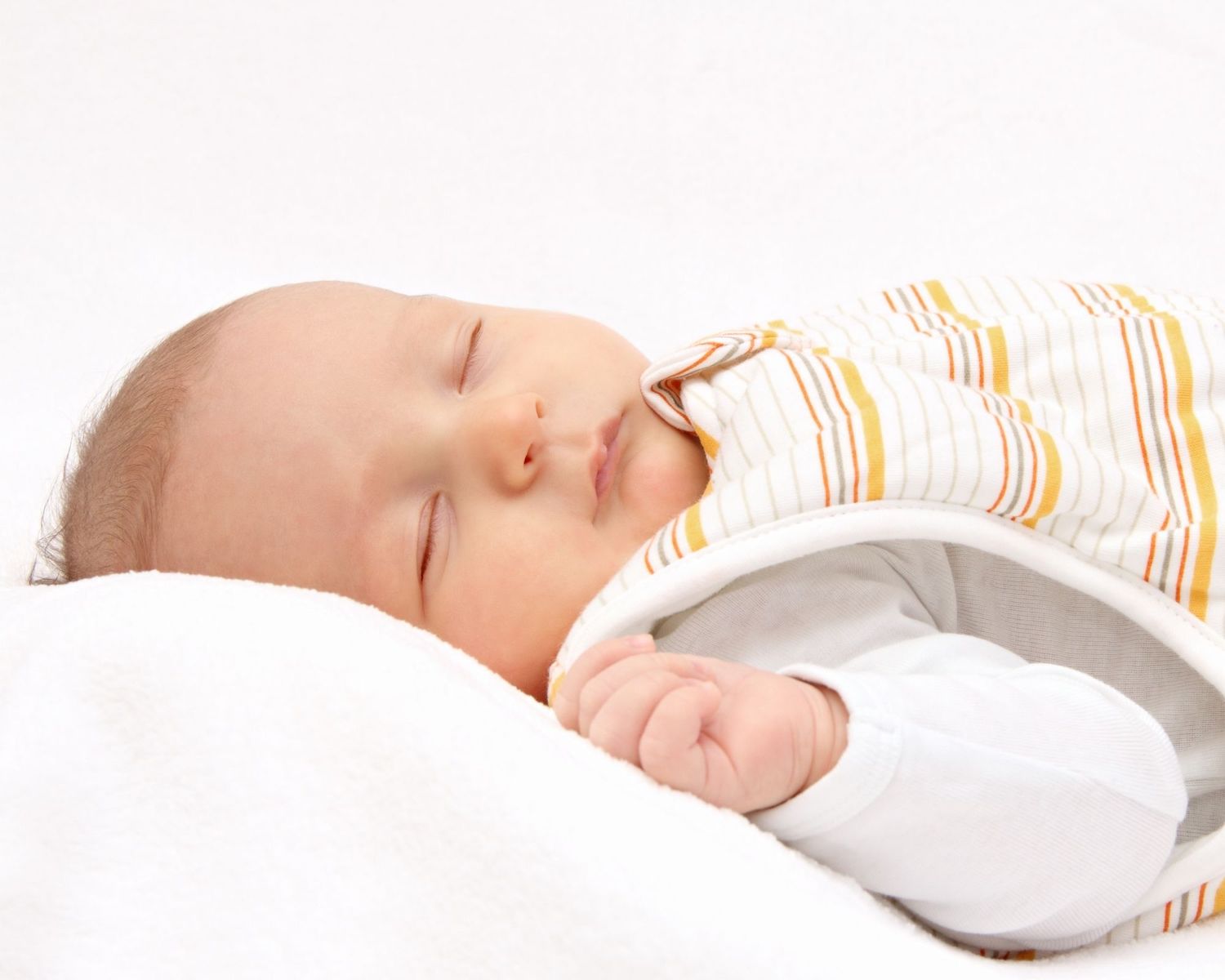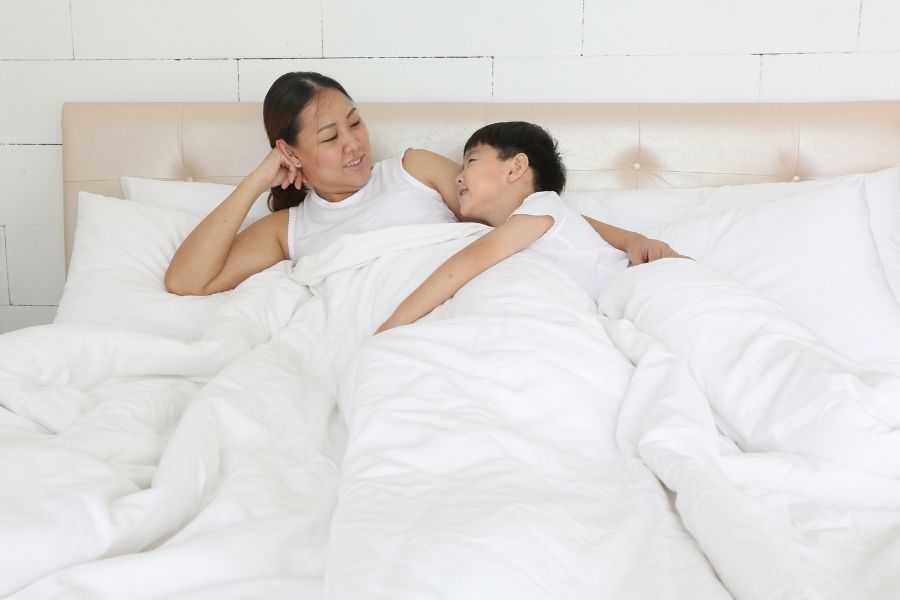Looking to start a bedtime routine with your baby? Find out when to start a bedtime routine with your baby and what it should include.
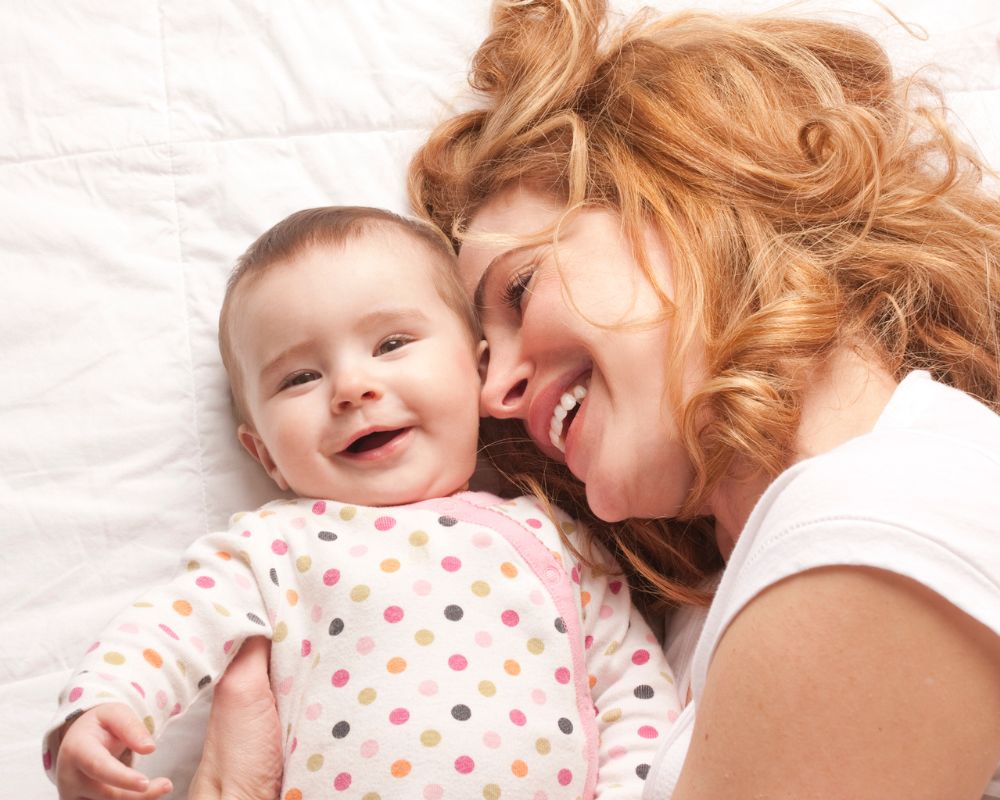
Doing a consistent bedtime routine with your baby can be so helpful in getting them better sleep.
Having a consistent bedtime routine can cue to your baby’s brain that sleep is coming.
Even better, some studies have found that using a bedtime routine each night over the course of six months translates to more minutes of sleep at night for babies.
Let me walk you through how to establish a solid bedtime routine with your baby.
To help you better, start by downloading my free baby sleep calculator to see when nap time and bed time should be based on your baby’s age. Click here to grab that, it’ll be super helpful.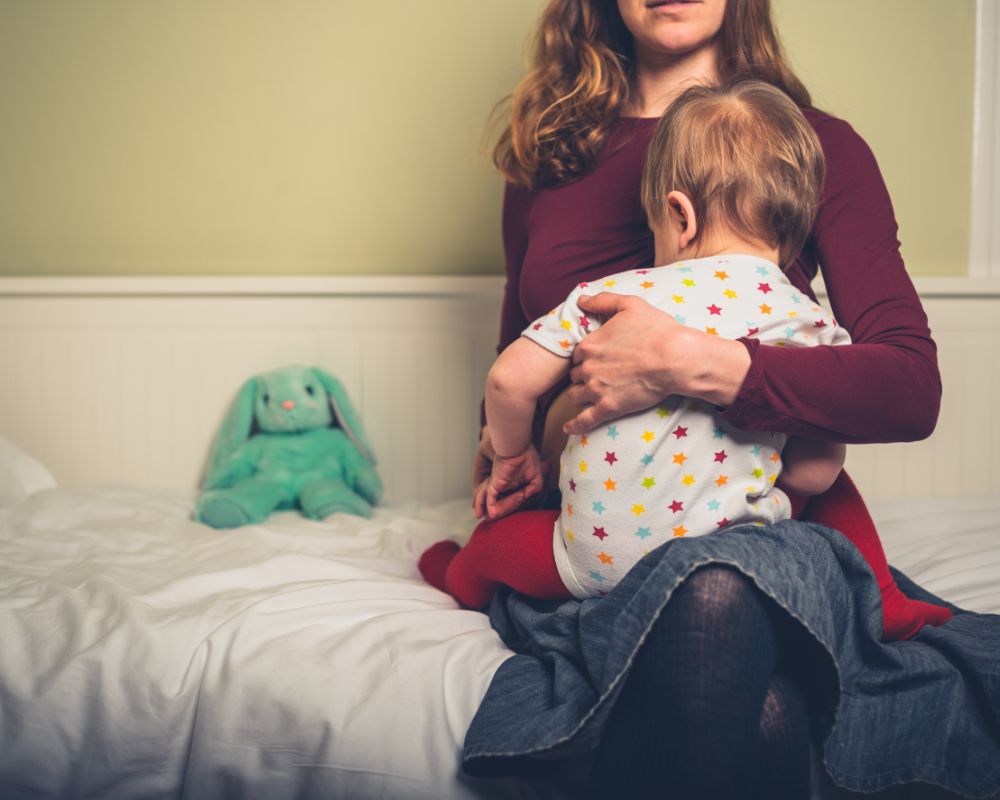
When Should You Start a Bedtime Routine With Baby?
I recommend starting a consistent bedtime routine with your baby between 6–8 weeks old.
The American Academy of Pediatrics (AAP) recommends that you implement a sleep-promoting environment, routine, and good sleep hygiene as early as possible.
Newborn babies as young as 8 weeks old can start to recognize and settle in to a routine.
In the beginning your routine will be short and sweet.
After all your newborn wake windows are still only about 45–60 minutes at this point.
But eventually, your baby’s bedtime routine will lengthen and it can be a wonderful time of connection.
Keep reading to see what a newborn bedtime routine might include.
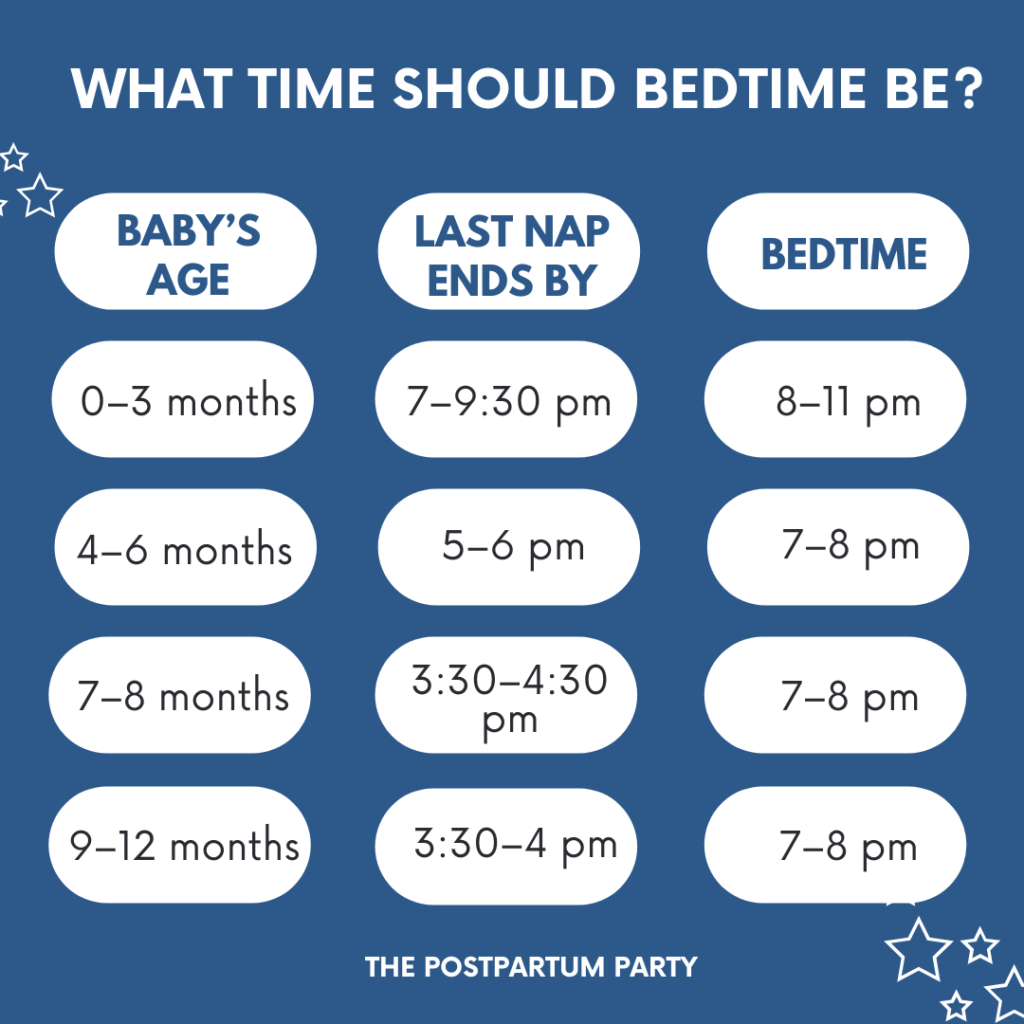
What Time Should Baby Go to Bed?
During the newborn phase, your baby’s bedtime will be between 8–11 pm as you get into a routine and they work out their day/night confusion.
After 3 months old, most babies do well with a bedtime between 7 and 8 pm.
There may be times when you bring bedtime earlier by about 30 minutes to avoid an overtired baby or push bedtime 30 minutes later when your baby is going through nap transitions.
Why Is a Bedtime Routine Important?
There are so many ways that a consistent bedtime routine with your baby is beneficial.
Sleep Associations
Your baby’s bedtime routine allows you to use sleep associations that cue to them that sleep is on the way.
Some examples of these sleep associations might include:
- Diaper change
- Changing into comfortable pajamas
- A light massage
- Reading one or two books with your baby
Soothing to Baby
Another benefit of a baby bedtime routine is that your relaxed demeanor as the parent helps your baby mirror your level of calm. This prepares their nervous system for rest after a prolonged time of stimulation.
Babies and toddlers thrive off routine. Knowing what to expect can also be calming to them.
Cognitive Development
Beyond better sleep, a bedtime routine can also promote literacy and language development (if the routine includes a story or song), secure parental attachment, and behavioral and emotional regulation in young children.
Bonding
But perhaps my favorite reason for implementing a bedtime routine is this: it helps you bond with your baby!
The bedtime routine is such a precious, special time for bonding with your little one. You won’t have the opportunity to be so involved in the end of their day forever, so take advantage of the time while you can.
A strong bedtime routine can also be adapted into a nap routine to help your little one sleep better during the day.
Get Better Sleep with The Baby D.R.E.A.M. System
If you want someone to walk you through the process of sleep training, let me help. The Baby D.R.E.A.M. System is for babies 4 months through 2.5 years old. I’ll walk you through how to establish daily routines, sleep schedules, and sleep training techniques to help you break the sleep associations you no longer find beneficial! Check it out here.
How to Create a Bedtime Routine
As you start considering what to include in your baby’s bedtime routine, there are some things I want you to keep in mind.
Here are 4 essential components of a good bedtime routine.
Nutrition
Whether your baby is a newborn, a baby, or is already in toddlerhood, they will all have this in common: they will sleep better with a full tummy.
The key with nutrition is to make sure it’s the first step in the routine. Allowing some time between the bedtime feeding and falling asleep is important for different reasons, depending on the age of your little one.
For young babies, feeding before going through the rest of the bedtime routine allows them some time to digest before laying down flat. This will help with issues like reflux or gas when your baby is super young.
You also want to make sure nutrition is the first step of the bedtime routine for nursing/bottle-fed babies so you can avoid nursing to sleep. That can be a tricky (although not impossible) sleep habit to break.
Lastly, if your little one is a toddler or has teeth and is eating solid foods, feeding as the first step of the bedtime routine allows you to clean or brush their teeth after the last food of the day.
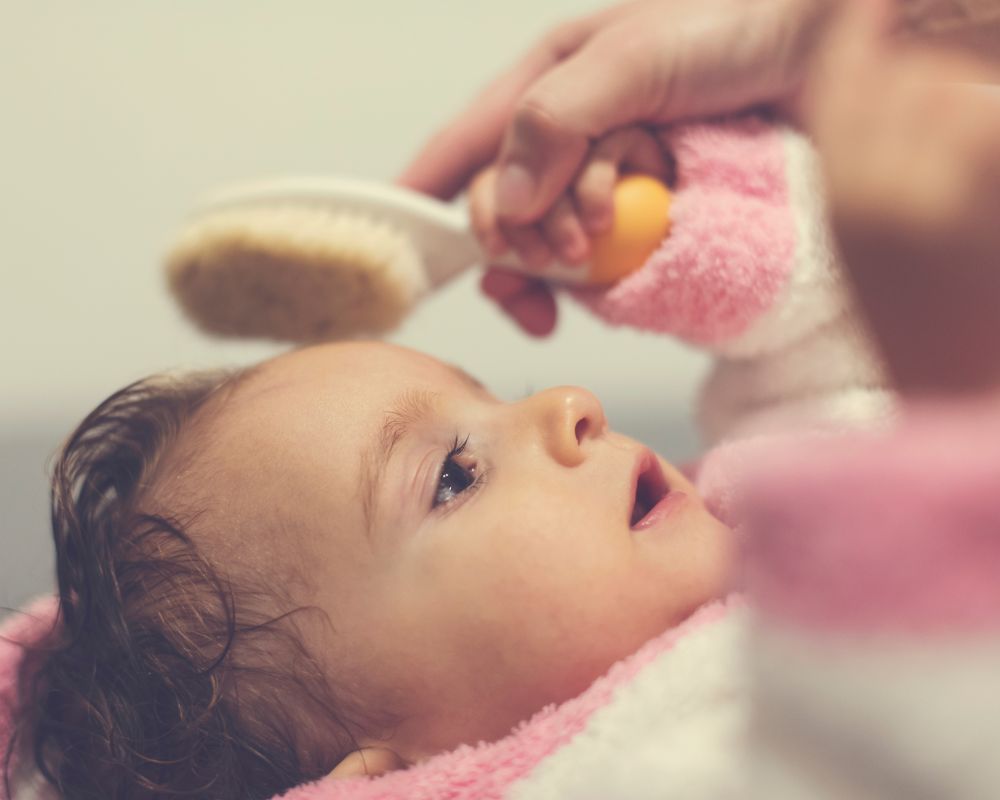
Hygiene
The next part of your baby’s bedtime routine has to do with your little one’s hygiene.
Water can be a great cue that it’s time for sleep. You don’t need to bathe your baby every single day. Even using water to wipe down their hands, face, and feet can be a nice calming activity to help prepare them for bed.
As I mentioned, if your baby has teeth, you should clean them (but don’t use toothpaste unless instructed by a pediatric dentist).
For babies, make sure to start them off for the night in a clean and dry diaper. Some parents choose this last diaper change of the day to also incorporate some gentle lotion and calming massage.
The last key component of good hygiene in the routine is to dress your baby for sleep in clean pajamas and a swaddle or a sleep sack.
The great thing about sleep sacks is that they work from infancy through toddlerhood. Check out my list of the best sleep sacks here.
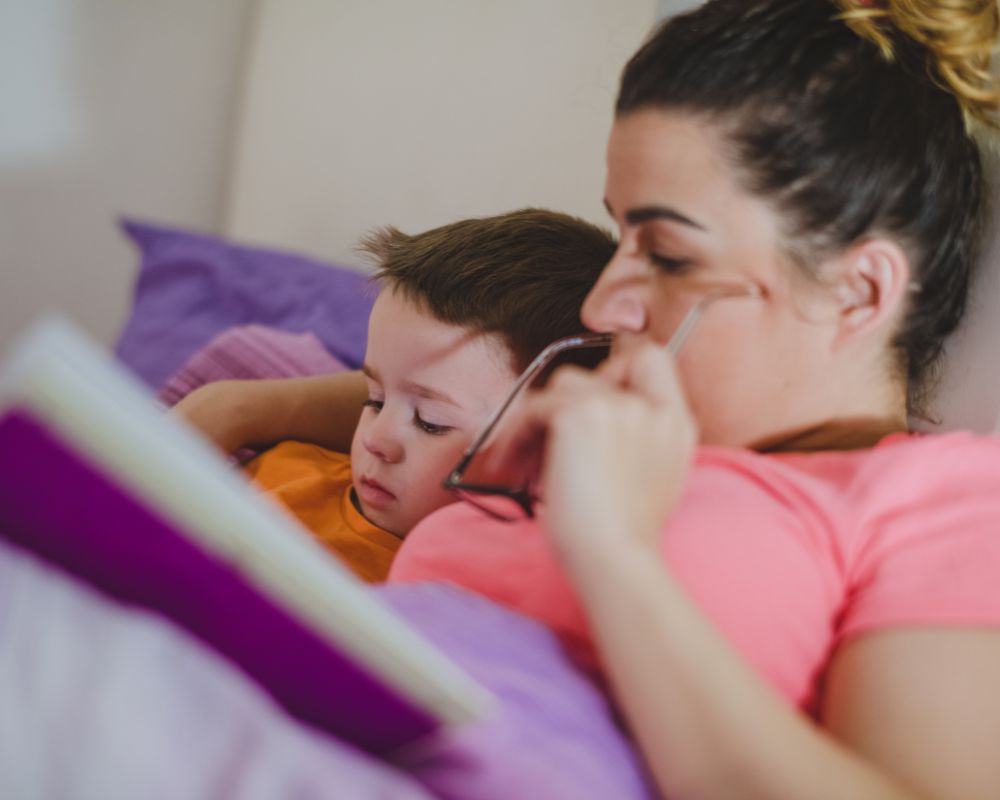
Communication and Connection
Once your little one’s tummy is full and they’re clean and dressed for bed, this is your time for connection with your little one.
Some families choose to incorporate lullabies, prayers, or stories at this time. The key here is to be consistent—don’t mix it up every night.
For example, when our daughter was an infant, we would read one board book and sing one song together. Over the months and years, the content of the book and the song changed, but she always knew to expect one of each.
Use a low, soothing voice and keep movements slow so your little one can start to mirror the calmness of winding down at the end of the day.
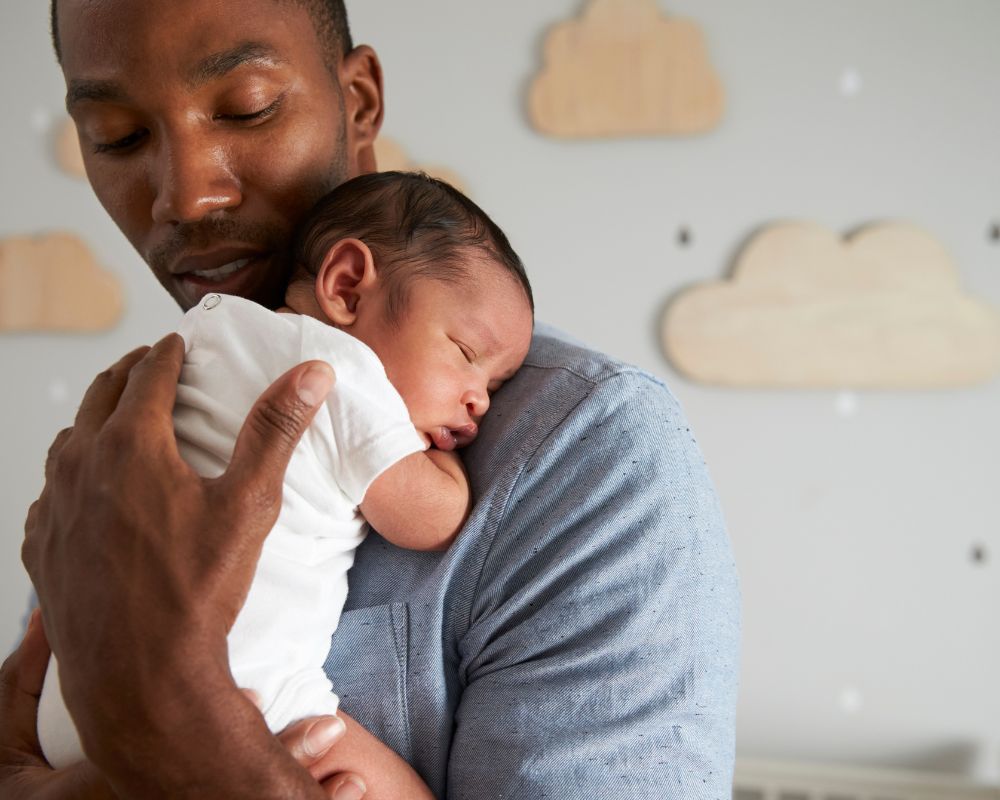
Physical Contact
Holding your baby and being in physical contact with them will help promote the security they need to relax and fall asleep.
You’ve probably already been cuddling, rocking, and/or holding your baby while you take them through the communication part of their routine. That’s great, because your physical contact is helping you both feel calm.
The last part of your baby’s bedtime routine should be one last element of touch. It can be a rock and a back rub, a hug and kiss, a snuggle, or some pats to reassure your baby that you will be nearby if they need you.
While the bedtime routine will look slightly different depending on your little one’s age, the routine should incorporate each of these four elements in some way.
Sample Bedtime Routines
Let’s take a look at some different bedtime routine examples at different ages.
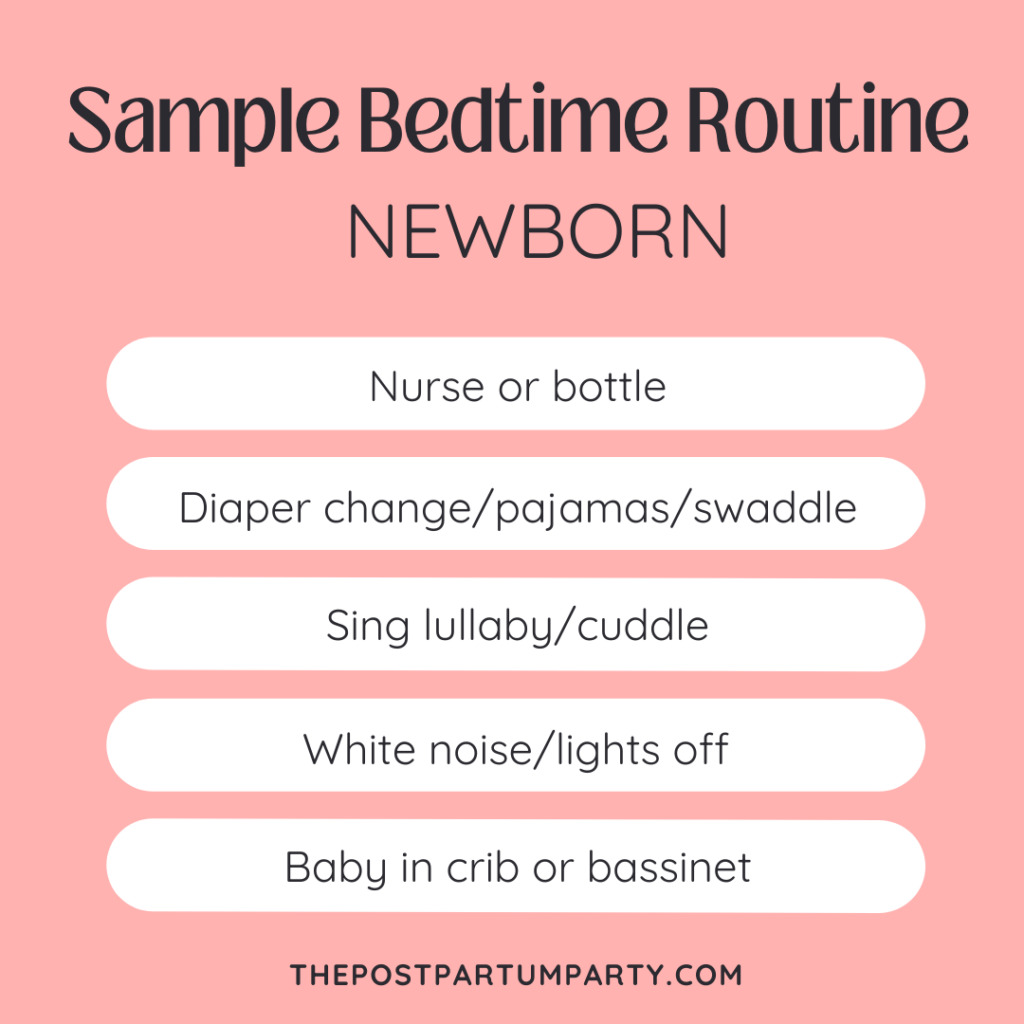
Sample Bedtime Routine for Newborns
The order of events for a newborn’s bedtime routine might look like this:
- Nurse or bottle
- Washcloth wipe-down
- Diaper change
- Dress in pajamas
- Swaddle
- Sing lullaby/cuddle
- Lights off/white noise on
- Set baby into bassinet or crib
- Stand crib side and pat while singing a song
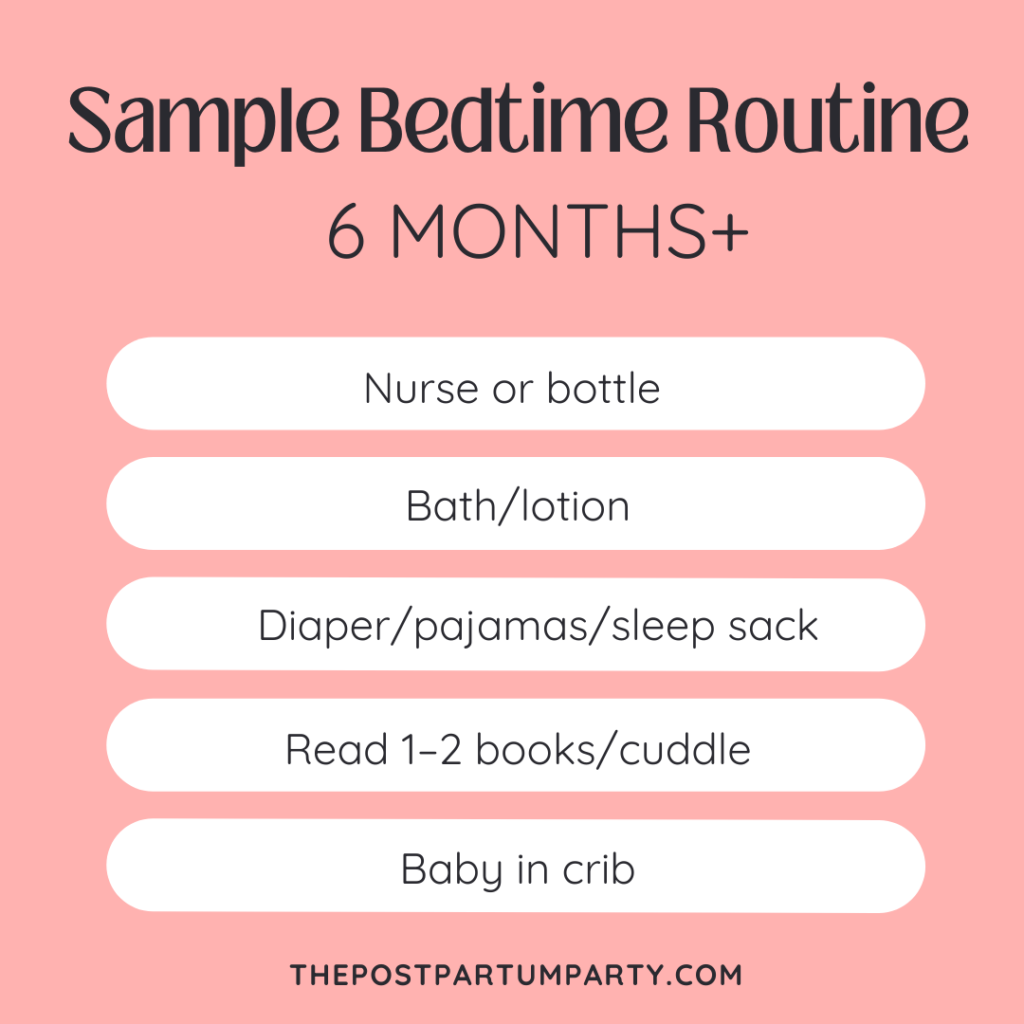
Sample Bedtime Routine for 6 Months
The bedtime routine probably won’t change too much as your baby grows, but the way you dress them for sleep will change as they grow out of the swaddle.
- Nurse or bottle
- Bath time (especially helpful after a solid food dinner)
- Diaper change and lotion
- Dress in pajamas/sleep sack
- Read 1 to 2 books
- Set into crib and leave the room
- Turn out the lights and turn on white noise
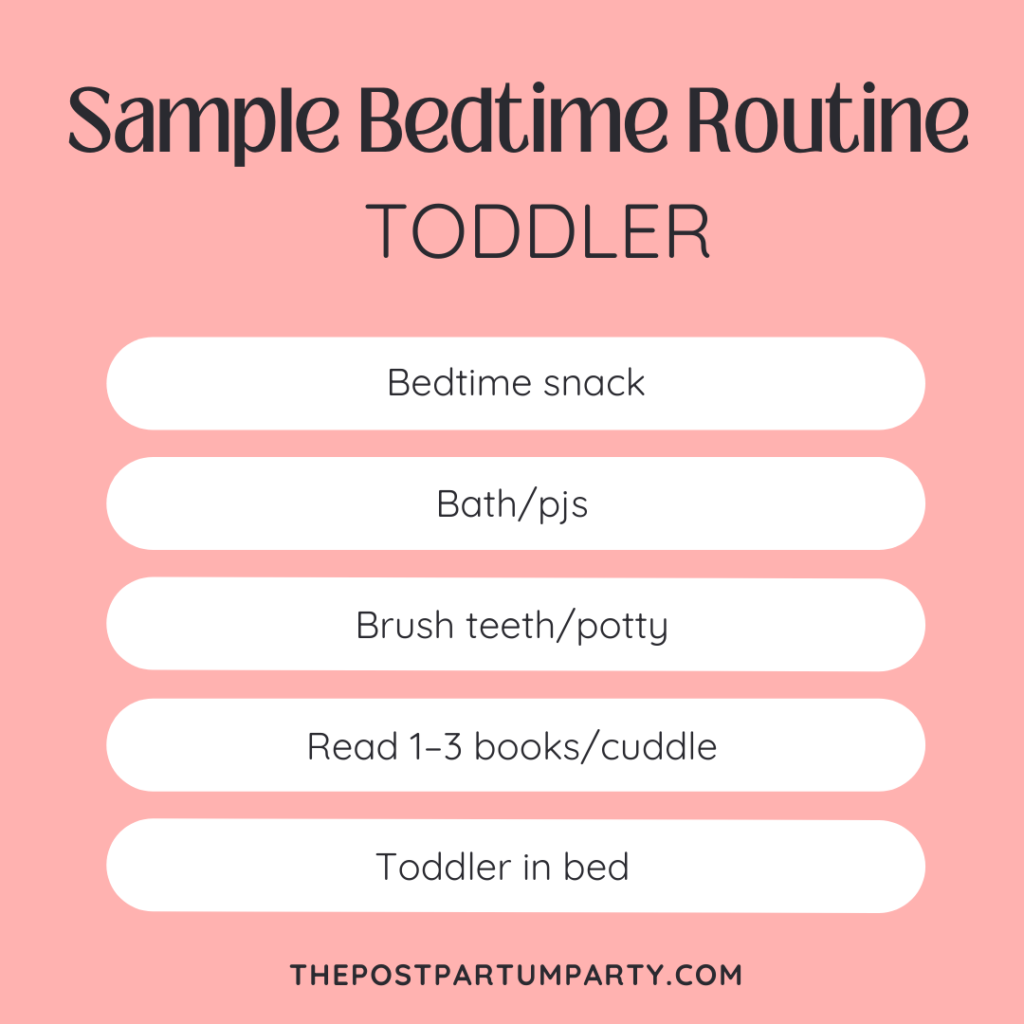
Sample Bedtime Routine for Toddlers
As your little one gets older and their ability to communicate (and stall!) improves, you might have to incorporate some new things into the routine. They might have more opinions about books or songs, and verbal warnings/countdowns will be key.
- Last chance for food (try to make it high protein to carry them through the night!)
- Bath time/Pajamas
- Brush teeth
- Potty
- Let them pick 1–3 bedtime books (give them limited options to save time), read it in bed
- Cuddle and prayers
- Hug and kiss
- Turn down lights and turn on white noise and a night light
If you have any questions about your baby’s bedtime routine, leave them in the comments and we’ll help you troubleshoot.
- Practical Tips if your Toddler is Going Through A 3-Year Old Sleep Regression - April 26, 2024
- Baby Led Weaning vs Purees — Which Should I Choose? - April 25, 2024
- 10 Adorable Letter Board Pregnancy Announcements - April 25, 2024
